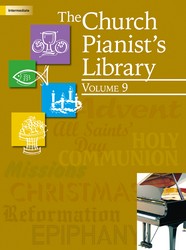- |
User Links
On Jordan's Bank the Baptist's Cry
Hymn Information
- First Line
- On Jordan's bank the Baptist's cry
- Author
- Charles Coffin (1736)
- Text Source
- Tr. composite
- Tune Name
- PUER NOBIS
- Adapter
- Michael Praetorius (1609)
- Harmonizer
- George Ratcliffe Woodward (1910)
- Tune Source
- <cite>Trier manuscript</cite>, 15th c.
- Topic
- Biblical Names and Places: John the Baptist · Biblical Names and Places: Jordan River · Church Year: Advent · Doxologies
Copyright Information
- Text Copyright
- Public Domain
- Tune Copyright
- Public Domain
- Reprint/Projection Information
- Words and Music: The Words and Music are in the Public Domain; you do not need permission to project or reprint the Words and Music.
Full Text
Scripture References
Thematically related:
- st. 1 = · · · ·
- st. 2 = · · · ·
- st. 3 = ·
Further Reflections on Scripture References
John the Baptist's announcement "Prepare the way for the Lord" (Matt. 3:3, a quote from Isa. 40:3) is the primary basis for this Advent hymn. Stanzas 1 and 2 apply that message to people today; stanza 3 is a confession by God's people of their need for salvation; stanza 4 is a prayer for healing and love; stanza 5 is a doxology. This much-loved Advent text is laced with various scriptural phrases.
Psalter Hymnal Handbook
Confessions and Statements of Faith References
Further Reflections on Confessions and Statements of Faith References
What is notable about this song is that it concludes with a Trinitarian doxology, thus pointing to the truth that the coming of Christ was clearly a redeeming action involving all three members of the Trinity. Heidelberg Catechism captures the role of each member of the Trinity in Lord’s Day 12, Question and Answer 31 when it professes that Christ is called anointed, because he has been “ordained by God the Father and has been anointed with the Holy Spirit” to be our prophet, priest, and king.
On Jordan's Bank the Baptist's Cry
Call to Worship
Confession
you came down, the mountains quaked at your presence.
Assurance
Additional Prayers
[The Worship Sourcebook]
On Jordan's Bank the Baptist's Cry
Tune Information
- Name
- PUER NOBIS
- Key
- D Major
- Meter
- 8.8.8.8


 My Starred Hymns
My Starred Hymns






